
Didn’t see that coming
“All I know is that right now, I’m excited by the openness of opportunity that I’ve afforded myself by not knowing what path I’m going down, and that’s a pretty big change for someone like me who usually thrives off of knowing every step of a plan”
-Me, about 7 months ago, in the blog post previous to this one.
Reflecting upon this quote now, I can confirm that I truly had no idea about the road I was about to embark down. The executive summary of my past 210 days include me running some personal bests, messing up my back again, cross training a lot, getting back in shape, trying steeple, getting a fracture doing steeple, and learning to surf. And now we’re here.
Reflecting upon this quote now, I can also confirm that looking back on the path I went down was awesome and brought me more happiness, curiosity and strength from my running than what I’d had for a long time prior to this year. Let’s rewind:
Shortly after my last post, I went to Seattle to run an indoor 3k and won my section in a personal best time of 7:57. The last time I’d won my section of a race was in 2016, so it was a real good way to kick off my 2019 racing season. We headed back down to Phoenix at the end of February for another training stint in the heat, and not long after that it was time to kick off the outdoor season at the Stanford Invitational. Unfortunately the day after my last big tune up workout before Stanford, my upper back locked up which led to some nagging lower back pain that I couldn’t shake. I was able to get onto the line at Stanford thanks to Felicity, our physio on the trip, and notched an 8 second PB of 13:49.
Unfortunately, 2 days after the race, my back pain turned to the point where I was unable to run without a crippling amount of pain. This was right before our Flagstaff camp, and we made the decision to still go up and try to get me back onto my feet at the camp and still gain the altitude benefit. After about 2.5 weeks of just cross training, I was able to run again and get back to some workouts in Flagstaff, but it was evident that I’d lost some rhythm which delayed any sort of racing until late May.
Which brings me to the steeplechase. After my 5k at Stanford, Heather and I sat down and made a decision on what I wanted to focus on for the summer: 5ks or steeples, or back to 1500s. I’d been having a lot of fun hurdling and was still curious as to what I could possibly do in a steeple if I made it my main focus, and knew it was now or never if I was going to find out. Once I was healthy and back to running workouts mid-way through April, we incorporated hurdle work again and started throwing them into workouts. After a solid 3 week block in Victoria of steeple specific training and getting some practice in the water pit, we targeted an all-comers meet in Nanaimo at the end of May to give it a try. I was pretty nervous, since I’d never tried steeple at all in high school but knew that I had to start somewhere and that it would only get better from that race forward. On the first or second water pit, I remember coming down and landing pretty hard, and thinking “yeah I’ll feel that one later”, which I inevitably did the next day. And the day after that. And the one after that too. I was able to get through 8 by 1k at threshold with my foot taped up a few days later, but ended with me hobbling to a stationary bike to cool down instead of jogging. This led us booking an MRI. I’ve never had a stress fracture, so I really didn’t know if I had one or not prior to the scan. All I knew that I had pain in one part of my heel that I couldn’t get rid of. Sure enough, the MRI confirmed the pain was from a fracture in my calcaneus, and shortly after we decided it best to pull the plug on the entire season, instead of trying to get back on my feet for a short end of August racing stint.
Yeah, not gonna lie I didn’t draw up my 2019 season like this in my head. The part that matters for me though is that I wouldn’t have changed the path I went on.
The curiosity of opportunity that this year provided me filled me with excitement and a drive that I’m still carrying forward to today. The one main thing that has changed for me in these past few months is that I’ve got a bit more direction now. When I look at my fractured heel in a glass half full kinda way, I realized I’d gained some key insights:
- When I committed to learning to hurdle and then racing steeples this year, I was hoping to find out if I could get technically proficient enough in the event to actually take a crack at running in the 8:40s range. I was hoping to get around 5 races in, and then make a decision from there if it was something I was going to keep focusing on for 2020. I could try again, but the risks of doing so and having this happen again next year would be a lot more catastrophic. Having a clear perspective on this is a benefit to fully focusing on one thing for next year, which brings us to point number two:
- After I ran 13:49 in March, I was tempted to ditch the hurdling and focus on 5ks for the season, but my curiosity for steeple trumped that thought. Tackling some steeple workouts and pushing to improve my technique was something that I was having a lot of fun with, even though some of the workouts were pretty grueling. However, after my fracture, I shifted my focus on whether or not I wanted to go back to the 5k, and it was pretty apparent that I wanted to reopen that door. My race in March was the first track 5k I felt that I was actually racing and competing in, as opposed to just flat out surviving.
- My last day of running pre-diagnosed stress fracture was May 31st. I cross trained until my MRI results came in on June 11th, and then took 3.5 weeks completely off as my offseason rest-break. I started cross training and doing strength work again in the middle of July, which is the earliest I’ve ever begun a fall build in the 11 years I’ve been consistently running. Probably the biggest a glass half full mentality that came from my fracture was the fact that I was determined to not waste this extra time I was presented with. I was able to get into the weight room and see our practitioners in Victoria to build a program that I can’t usually juggle with higher volume running. Big shout outs to Sandeep, Felicity and Brad who have been around Victoria this summer to help me take these steps.
- Being injured and not training a whole lot in June and July allowed me to take advantage of some summer activities I wouldn’t usually be able to do if I was racing. I got to enjoy Dan Block’s wedding in Saskatoon, made two trips back to Ontario to be with family in cottage country, visited with two of my college roommates I hadn’t seen in two years, and checked out Port Moody, Tofino and Comox.
This finally brings me up to speed to today. I’m back in Victoria, currently in doing a strength routine that’s designed to make my back bombproof for next year. I’m building mileage slowly, and having fun looking forward and starting to think about putting some races on my fall calendar. This was the first summer that I didn’t sit back and contemplate what I was doing and if I wanted to keep going. Instead, I’m already fired up to get back to work, brick by brick.
-Rob
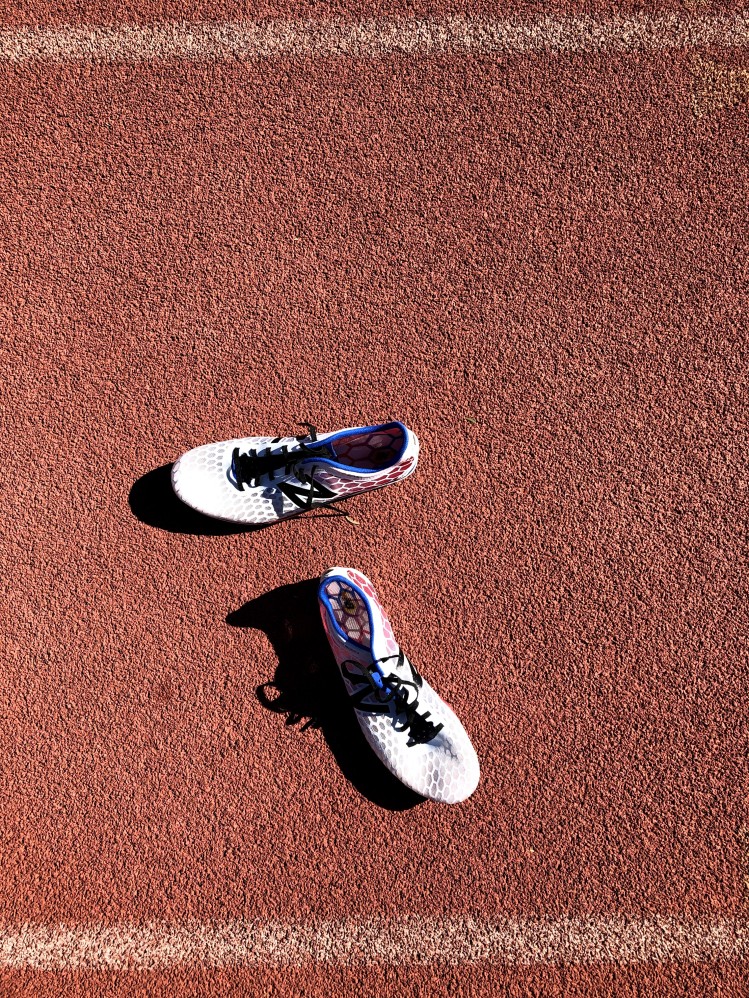
Commit to the Downs
I highly doubt William Nylander will ever read this blog post. But if he somehow does, I hope he can relate to it. For those of you who are reading this and aren’t following the Leafs, William Nylander took right up until the December 1 deadline to sign his restricted free agency contract, and consequentially missed Toronto’s training camp and the first two months of the NHL season. Needless to say this has left him behind the eight ball and unable to produce goals and assists at a pace which we all know he’s capable of. Willy, if you’re reading this, just wanted to say that a part of me feels for your bumpy start.
The beginning of my training this fall was less than ideal. After taking a few weeks completely off in August, I slowly started to slowly build my mileage. On a regular 40 minute easy run at the beginning of September, I experienced a pretty gnarly back spasm. Since the winter of 2017 I’ve dealt with somewhat random episodes of lower back pain / tightness. A set of box jumps in November ’17 left me unable to bend down, tie my shoes, or train for about a week. Patellofemoral Syndrome in my knee in January ’18 cut my indoor season to one race and off my feet for 10 days (not back pain, but probably related to some sort of imbalance). Two days before the Stanford Invite in March ’18 I came off the plane barely able to jog (big shout out to Brad Curry who was on site to loosen me up multiple times a day so I could set a personal best in my 5k). Midway through our Belgium racing circuit in July ’18, another back pull came the day before my third race when I was reaching down to pick up a load of laundry. After this fourth flare up in September ’18, the team at the West Hub and I did some thorough reassessments into my movement patterns, weaknesses, and created a plan to help me stay on my feet.
Not running a whole lot for about 2 months left me pretty unfit; I had a pretty hard time getting back into shape. Harder than I thought. After getting things settled I started building consistency, but for pretty much two months felt like I was just slogging away at workouts. Heather and I decided to race in San Jose at the end of November at the Silicon Valley Turkey Trot 5k, a plan we’d used similar to the previous fall. I ended up fading pretty hard in the last mile of the race and ran 14:55, over 40 seconds slower than my time last year. I was pretty bummed, and was left to reassess things.
It wasn’t the first time in 2018 when I took a step back to think about what I was doing. When I reflected upon my 2018 at the end of year, I felt like I wasn’t as excited for the event I’ve been focused on, the 1500, as I’d been in years past. I’ve focused primarily on the 1500 for about a decade; it’s a familiar event and mostly all I’d known once we got into the thick of track season. I grappled with this lack of motivation, and what I wanted to do with it. I kept coming back to the fact that I knew I had more to give, but hadn’t given a longer distance race my true focus. In the past I’d felt like if I tried moving up in distance, it was a sign that I was giving up or signalling the beginning of the end of my time in the sport. That may very well be true, but it also may not be. What I do know for sure is that I’ll never feel content with what I’m doing if I don’t turn over every stone to see what I can do. For me in 2019, that means experimenting with things I’ve never done. Part of my back prehab from the fall included more hip mobility, which has included hurdle drills, which has lead me to playing around with some actual hurdling. Warning, this is still very early to see if I’ll actually try to steeple. I don’t know how many 5ks I’ll run and try to focus on this season. I have no idea how many 1500s, 800s or road races I’ll have on my schedule. I still don’t have a ton set in stone for 2019. All I know is that right now, I’m excited by the openness of opportunity that I’ve afforded myself by not knowing what path I’m going down, and that’s a pretty big change for someone like me who usually thrives off of knowing every step of a plan. It’s part of my bigger picture where I’m committing to being better at my weaknesses: being too hard on myself; not being open to things not going the way I plan them to. In the past there have been times where I haven’t committed to the down; not truly realizing and appreciating that it’s both an up and down process (which was my biggest takeaway from my San Jose race this fall). Committing to the downs is my new years resolution, along with using less plastic (thanks blue planet 2).
For now, I’m back in Victoria after a 2.5 week stint in Scottsdale, Arizona where our group just finished up our first training camp of 2019. I’m planning on spinning the wheels in a 3k at Seattle’s indoor track on February 9. Whatever the outcome, I’ll be looking to empty my tank (and drinking from a reusable water bottle). Thanks for reading,
-Rob

Brick by brick.

Sisyphus
I’m a pretty big Bojack Horseman fan. Season 5 just dropped and it’s been pretty difficult to limit myself to watching just one episode a day. If you haven’t watched any Bojack, you should probably get around to doing that (92% rating on Rotten Tomatoes if you don’t believe me). Classified as a dark comedy, the show brings to light different issues of society as well as the individual issues/ very real life flaws of each of the main characters of the show.
Each of them have unique downfalls, and there’s more than a few youtube videos that attempt to break down the overall philosophy of the show. Last month I was going through one of these videos which touched on character Princess Carolyn. She makes a reference in one episode to the the greek myth of Sisyphus, a sinner who is a sentenced to spend the rest of eternity rolling a boulder up a hill just to watch it roll back down again. My track season this year felt a bit like the myth of Sisyphus. I spent much of my season looking forward, but feeling like I was pushing a boulder uphill. I was hoping to rise above the crest or have this big breakthrough that just never really happened, and by end I watched the boulder fall back to the bottom.
I came into this track season focused on improving on my 1500 from last year since I still feel I’ve got some time to cut off, as well as the fact I’d like to continue to improve my short end speed. I went to altitude in April excited to put in a good training block, but unfortunately dug myself into a hole mid-way through the camp. Training at altitude is tricky and everyone handles the adjustment to the thin air differently. Some are able to jump into relatively normal training after an adjustment period, while some need to be more cautious. I’m realizing that I ride a pretty fine line with my oxygen saturation levels and how much I can handle at 7000ft of elevation. I let a few sub par workouts in April negatively affected me in my first few outdoor races, which was a big flaw on my part to let happen. I was able to mentally reset midway through May after I raced at Occidental College in LA when I felt like I wasted a real good opportunity to get some momentum going in my season. At that point I really concentrated on my race execution, and stopped worrying about what kind of fitness I thought I was in. This mindset really helped when I raced in Portland and Vancouver in June, two races I was happy with and set me up well for both nationals in Ottawa and to chase a fast race in Europe afterwards. Although my nationals finish this year was better than 2017, I still came up short of my goal of standing on the podium, and at the end of the day my 4th place finish left me disappointed. Then came Europe. Straight from the track in Ottawa to Pierre Elliott Trudeau airport in Montreal (shout out to Eric Palamar for the 90 minute lift). Four races, four weeks, all on the Flanders cup circuit in Belgium. A 3:41 clocking in my second race was encouraging and left me the most optimistic I’d been all season to make the most of my last half of the stint to get under the 3:40 barrier. However, a tweak in my back left my last two races to be sub par.
This was all pretty hard to swallow at the end of the season. Sometimes things don’t come together for a variety of reasons, and I’m doing my best to figure out what I need to change for this next year. I know I can’t view things as if I’m behind or in an uphill battle, rather accepting things as they come, something I didn’t do well until the middle of this past season. Even though I can’t walk away from 2018 with a seasonal best that I’m super happy with, I know that isn’t the only benchmark of success and growth in this sport (as easy as it is to let it be). I’m more experienced, more diligent in my craft, and overall feel that I’m improving even though I didn’t have the time this year to show for it.
French philosopher Albert Camus talks about the myth of Sisyphus in his 1942 essay, and according to Wikipedia, ends it with “The struggle itself […] is enough to fill a man’s heart. One must imagine Sisyphus happy”. Even though this year wasn’t what I hoped, I still enjoyed most of the process, although tough at times, there weren’t many instances I wasn’t having fun even though I wasn’t getting what I wanted out of it. I still have meaning, drive and passion for the sport, something that I reflect on every year during my off time. I’m back in Victoria and after a 3 week break from running. I’m starting to itch to get back to work, although I’m still figuring out what goals I want to set myself for the 2019 season. Whatever they are, I’ll be emptying my tank.
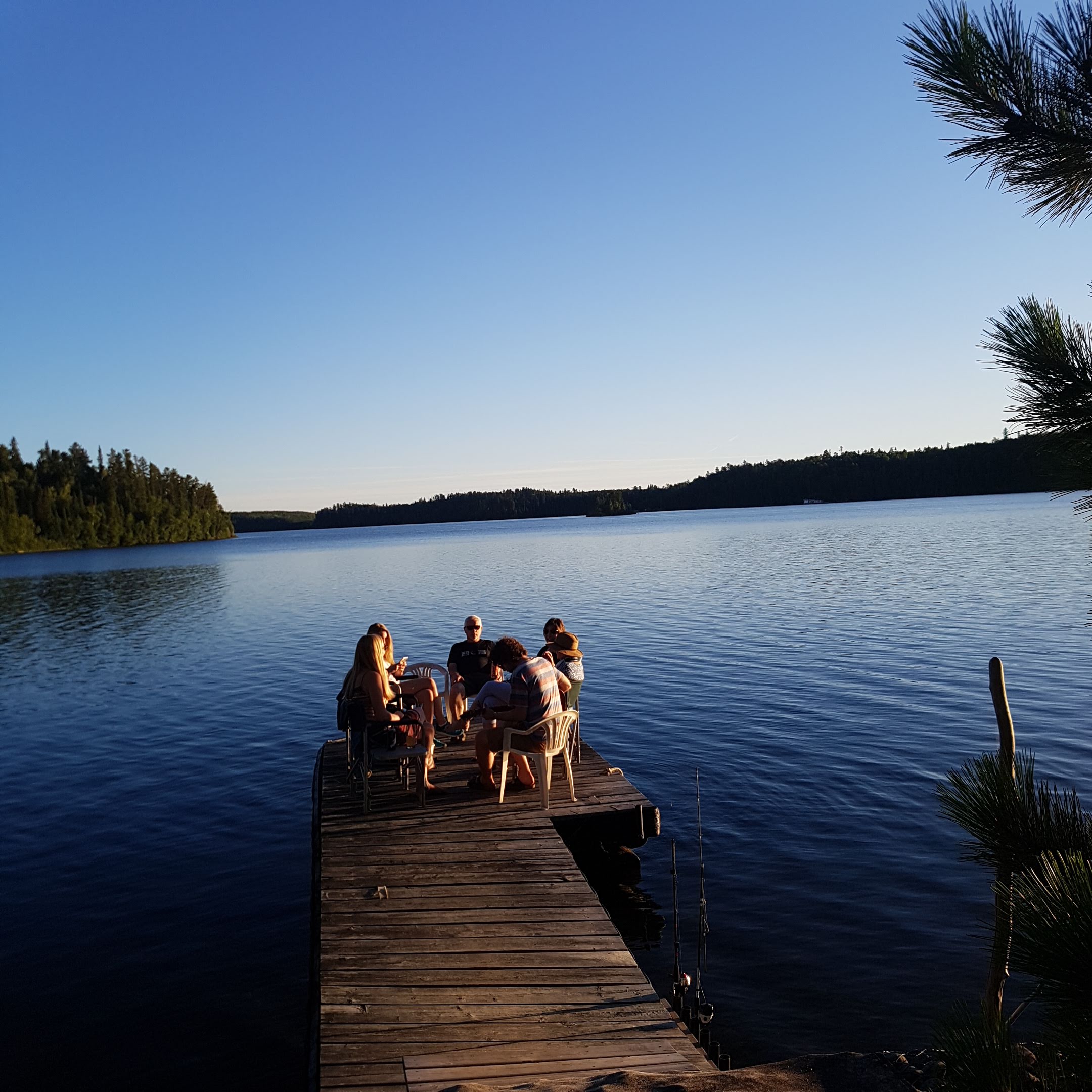
Home for a rest
Thanks for reading,
-Rob
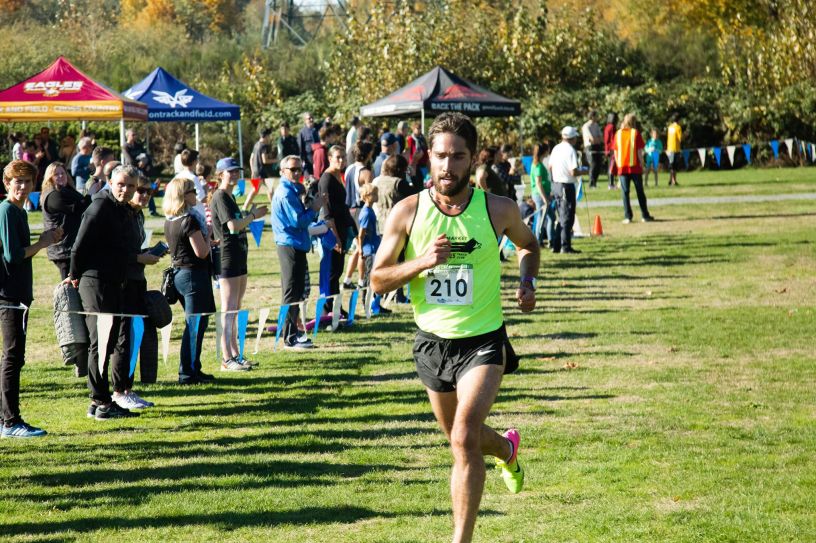
Empty the Tank
I’ve been trying to craft this post since the fall, but it wasn’t until I caught up with former member of the Etobicoke Huskies and Canadian indoor racewalk record holder Doug Brown over lunch last week when I was finally able to condense some of my thoughts into words. “You should make another post after your 5k at Stanford”, he commented. Doug, thanks for giving me the push to commit some time to this.
Rewind to the fall (insert pumpkin spice everything).
I came back to Victoria in September last year still digesting the track season from a couple of months prior. I wasn’t at a complete loss for training motivation, but I wasn’t waking up every day super pumped to get after it. That being said, there’s just some days that are like that, especially early on in base season. However, there usually comes a point in the fall where that fire reignites. Insert John Coleman. John is a mental performance consultant and began working with the West Hub this past fall. Big shout out to John, he’s a pretty cool guy and has helped equip me with a variety of different sports psychology tools. Within our first meeting he helped me have a bit of a lightbulb moment.
As simple as this sounds, John helped me separate my motivation from my goals.
I’d felt a little awkward telling friends and family last year that I was training to represent Canada at the Olympics in 2020. I’d originally thought it was a point of insecurity, telling others I was striving for something that I still had (have) a long ways to go to achieve. After the track season, I’d done a good bit of reflection and realized that making the Olympics wasn’t the ultimate why of why I was continuing to pursue running. After university, I felt that if I were to walk away from the sport, I would have left too much on the table. I felt that I could run faster in the 1500, and definitely wanted to try my hand at some 5ks. I’m super fortunate to have family, peers and coaches who encourage and support me in this pursuit (you all are da bomb). When I sat down with John to reflect upon my previous season, I asked him a pretty simple question: “is it ok if my main motivation isn’t to make the Olympics? Should I not be here if that’s whats not getting me out of bed every day?”. It’s a question that I’d been grappling with since I came back to Victoria, something I couldn’t definitively give myself an answer to, so it kind of just ended up on my mental to do list which never got checked off. John’s response to my question was pretty simple: yes, that’s very much OK. This led to a longer conversation that can be condensed in the following photo:
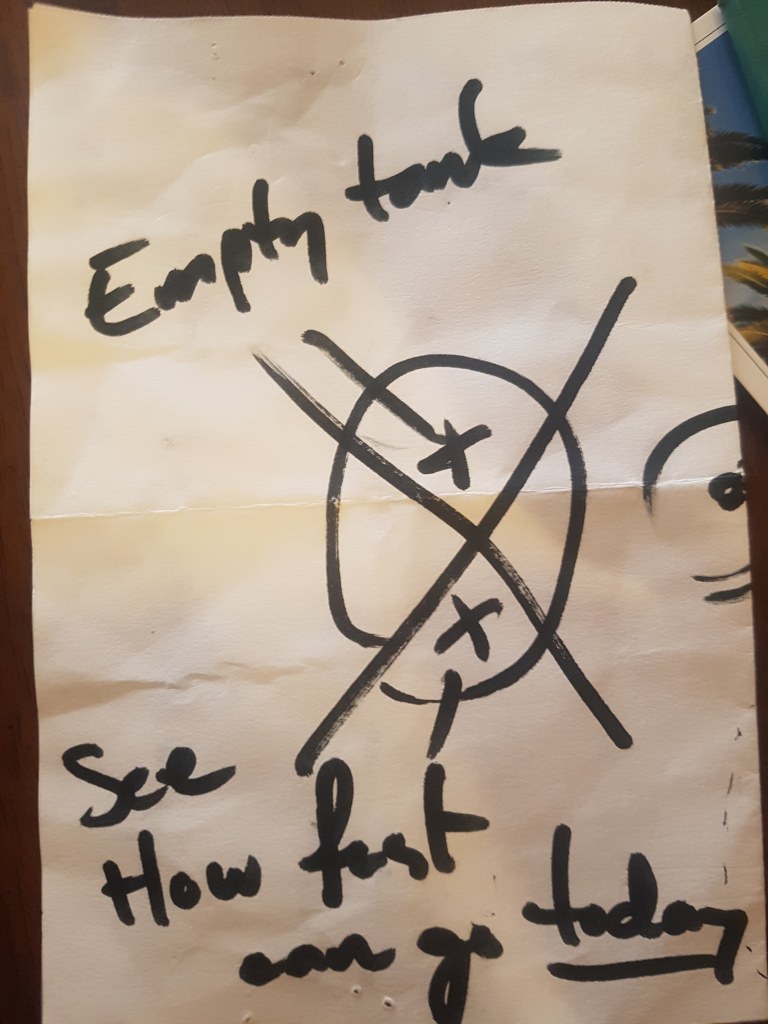
Empty the tank. This mantra embodies my strongest motivator. John and I talked about how at the end of the day, if I can’t look back and say that I gave running everything I had, then I wouldn’t be content with my running. This mantra embraces a constant drive to innovate, learn more, and challenge myself to be better.
See how fast I can run today. This was one of my overarching goals. The Olympics slots into my goals category for sure, but I know that to get there, a more immediate goal I have is challenging myself to see how fast I can go today, whether today is a key workout or a race (maybe not for easy runs, that could get ugly).
This discussion is what lit my fire this fall and allowed me to really embrace the everyday grind of training. Simply differentiating my motivation from my goals was actually pretty important for me. Knowing my goals helps me more clearly plan my training, my races, and my race plans. It helps to be my athletic compass. Acknowledging my motivation has helped me throw myself at hard training, instead of wanting to shy away as I have in instances in the past. It’s helped right my course and stick to my plan when things aren’t going my way. I’ve had this piece of paper on my wall for most of the fall, and have brought it to my races and to our training camps (it sits beside me as I write this post). Thanks, John, for this little note has helped a lot.
Training through the fall was pretty consistent, and I hopped into 2 races in October and November: the BC Cross Country Championships in Abbotsford and the Applied Materials Silicon Valley Turkey Trot Elite 5k in San Jose. I was able to get second at BC’s XC and notched a 5k PB of 14:12 on the roads, both being results I was happy with. I turned to 2018 with my eye on chasing a fast 3k and hopefully taking a stab at the world indoor standard of 7:52. Unfortunately after I opened up my season with a tactical mile at the UW Preview in Seattle, I had a bout of Patellofemoral Syndrome for 2 weeks which flushed my indoor season down the drain. Nonetheless, I committed to getting back to full health and laying a foundation for the outdoor track season.
After putting in a solid block of training in February and March, Heather and I decided to commit to doing two 5ks before heading up to Flagstaff, Arizona for our 4 week training camp. On St. Patricks day I headed over to Vancouver for the BC road 5k championships which took place around the perimeter of Stanley Park. I ran 14:16 for second place and was happy with my execution of the race. This past weekend I headed down to the Stanford Invitational to take a chunk off of my 14:17 time from the year prior. I notched a 13:57, which was off of my goal of sub 13:50, but a good stepping stone going into training camp.
On Sunday we travelled from Palo Alto to the thin air of Flagstaff to begin our next training block. Running at altitude for a few weeks helps give a performance boost later on in the year since, at a very basic level, your blood gets used to carrying less oxygen. I’m still not entirely sure of what the outdoor season holds for me yet, but one thing I know for sure is that I’ll be doing my best to empty my tank.
Cheers from 7000 feet, thanks for reading!
-Rob

True Grit
It’s taken me a while to try to get around to a new post, much longer than I’d hoped. After our San Diego training camp (which seems like ages ago) , I’d planned to put up a post before we headed to our second training camp of the year in Flagstaff, Arizona. Didn’t get around to it. Well, in Flagstaff when our only priority was to train and then put our feet up, I’d surely have time for a post. Didn’t get around to it. Maybe after a few of the outdoor races? ‘Yeah I’ll do it later’. How about when we went to Europe? Yeah, I think you see the trend.
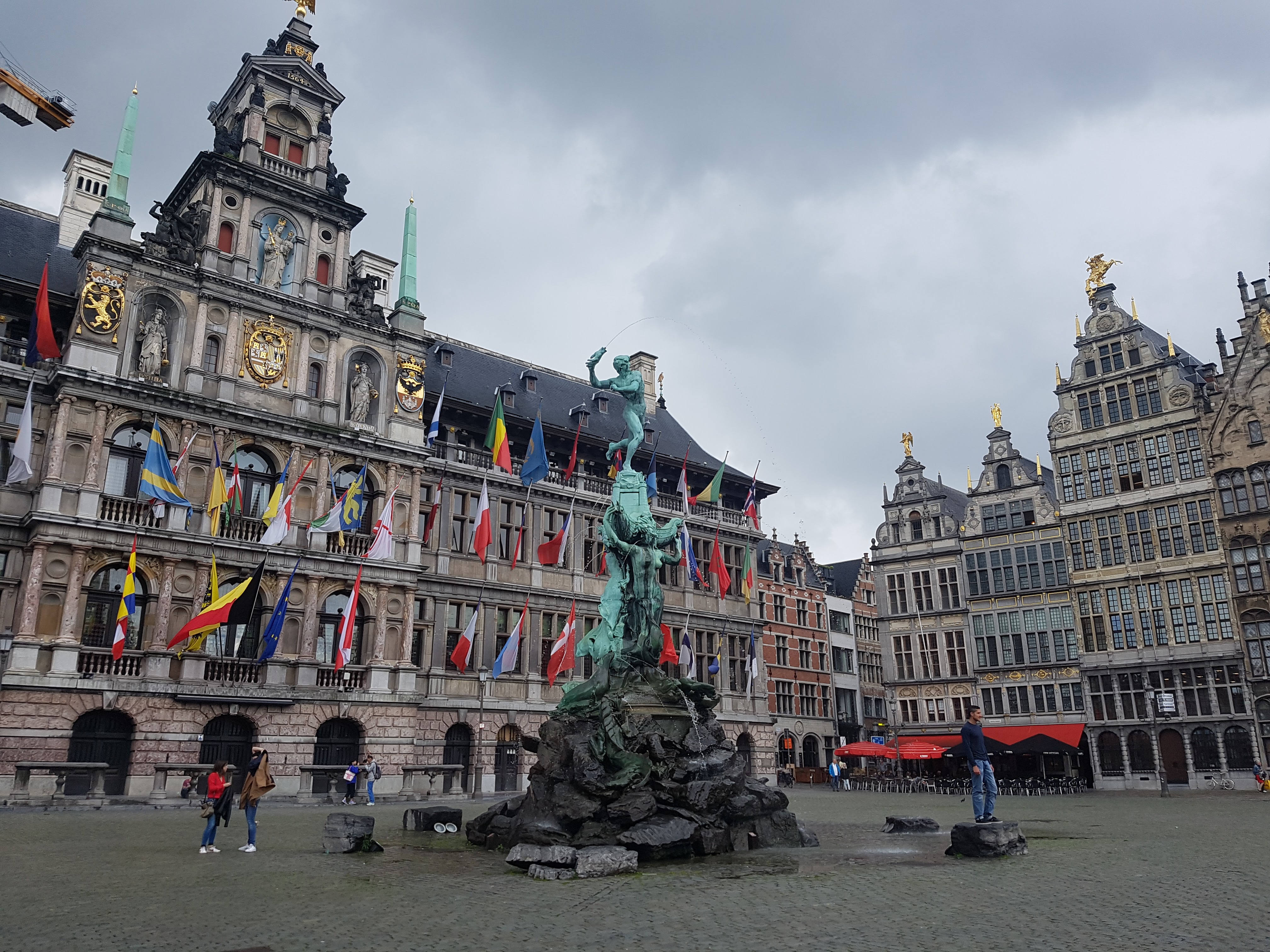
Yeah Europe is purtty
As updating this blog began to sink lower and lower on my priority list, some friends and family reached out and inquired about the sudden halt in my posts. Thank you, kind friends and family, for your inquiries have floated my updating of this blog from the ‘I’ll get to this later’ category to ‘yeah I should really actually do this’.
I didn’t truly realize at the time I made this blog how difficult it is to 1) keep people informed in a way that doesn’t all sound the same, and 2) be honest through tougher times. It’s easy at first to keep people updated with where we’ve travelled to, how our race results have gone, to talk about what went right and what could have gone better in different situations. As easy as it is, it’s a narrative that can get dull pretty quickly from both a reader’s perspective and a writer’s (which is another reason I delayed this post for so long). I also wasn’t ready to be as honest as I wanted to be in a blog post. To be perfectly honest, my year didn’t go as I’d hoped. I was hoping I’d run a bit faster, place a bit higher, to just be a better version of my athlete self. Below is the long and short (not that short) of how things have been since my last post. If you care for the more lengthy, full breakdown, I pick up where I left off in San Diego in my post before this one (now you can’t say I didn’t warn you for a long, drawn out post: ).
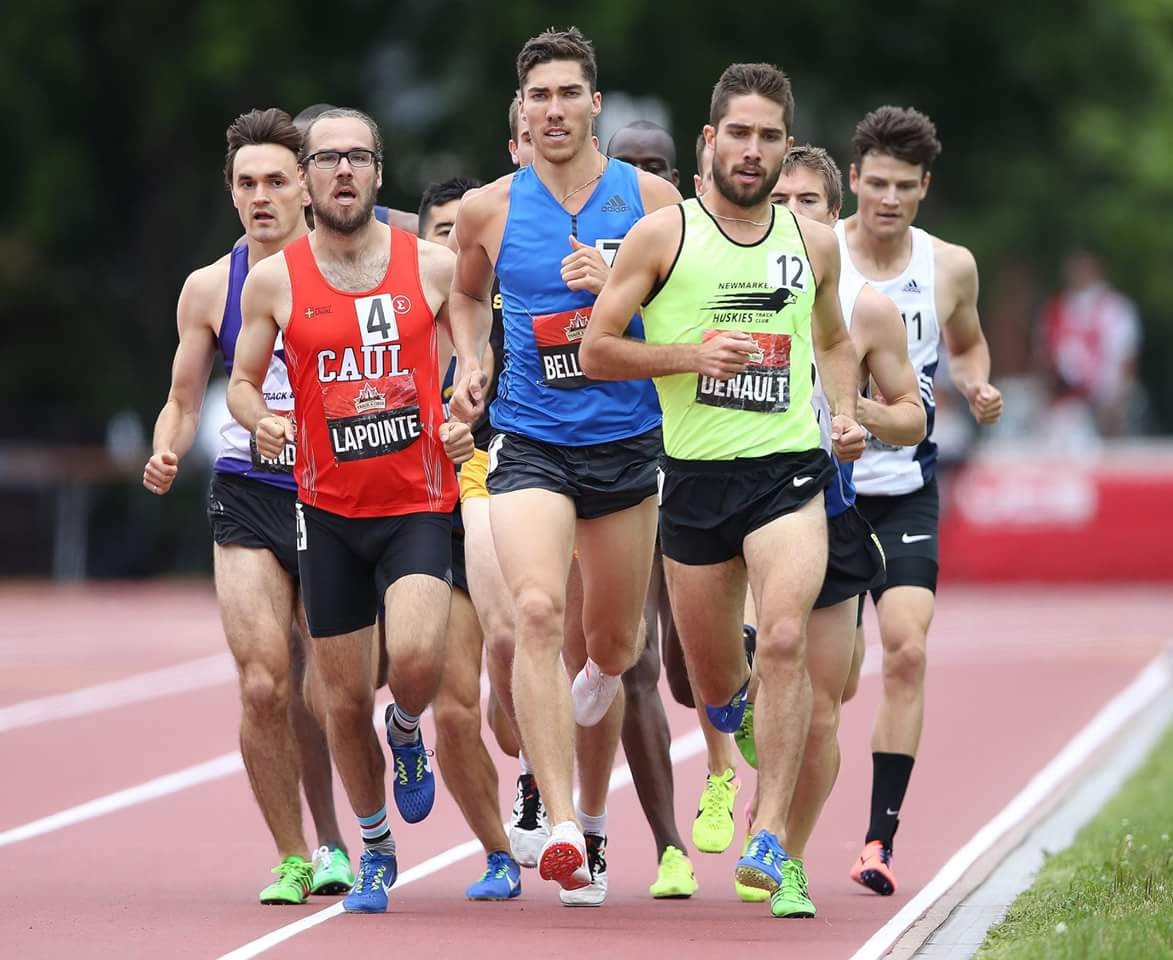
Nationals Prelim
Before you jump to that post, I figure its best to reflect on the year here here instead of at the end of my previous post. I came into this year with two primary goals in mind: top 3 at nationals, and to put myself in a position to qualify for the Commonwealth Games in Australia next April. I ended up 5th at nationals, and after the Commonwealth qualifying standards were released in May, it is highly improbable that I will be selected for qualification (more on that here: http://www.trackie.com/track-and-field/Forum/commonwealth-games-2018-ac-standards-released/15806/1/). Even though things didn’t go as I’d hoped, I wouldn’t have traded this year for anything (I also can’t complain about setting a personal best in the 1500 and dipping under the 3:40 barrier for the first time). Looking back now, I feel like a college freshman finishing up my first year. I’ve learned so much from being in Victoria; interacting with so many new athletes and staff has opened my eyes to what’s really needed to truly be a high performance athlete.
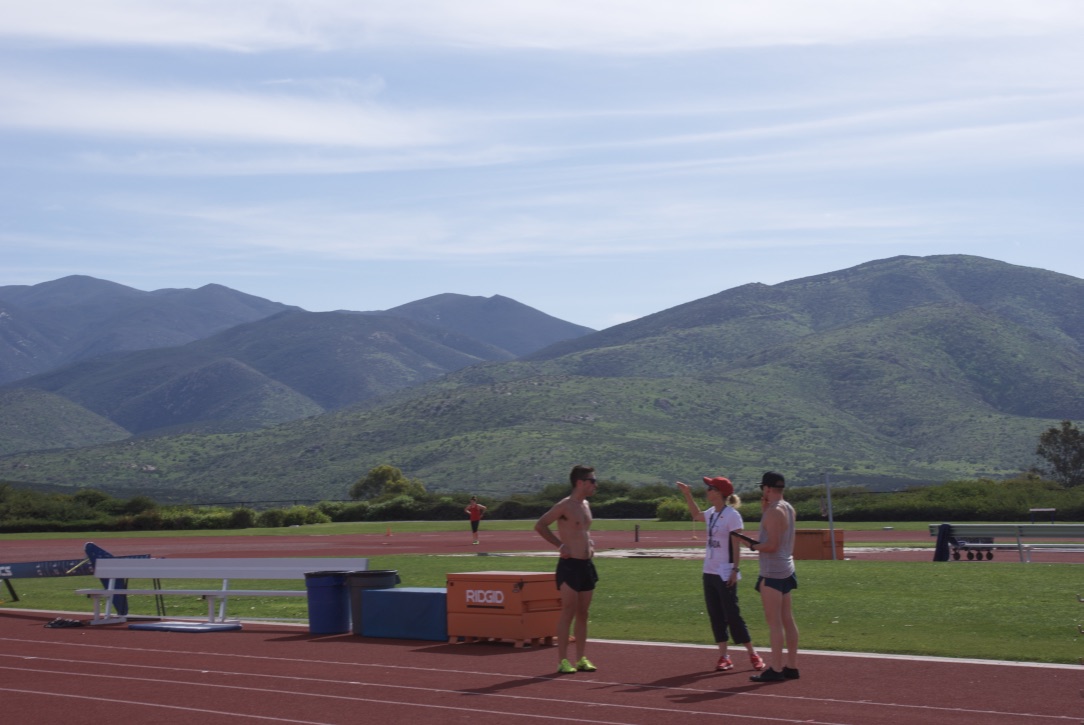
Never stop learning.
Besides honing in on nutrition, recovery, strength training, mental performance, ect., one of the most important things I learned this year is that the athletes that perform at the highest level in our country aren’t necessarily the most talented one or the ones that have the best genes. They don’t necessarily work physically harder than their competitors. What the best athletes do every single day is make more conscious choices that positively impact their performance than the athletes that just dream of being at their level. If I had to choose one word, they’ve got a heck of a lot of grit. They have overarching goals that dictate every action, and don’t become discouraged when things don’t go their way (for more on grit, check out Angela Duckworth’s Ted Talk: https://www.ted.com/talks/angela_lee_duckworth_grit_the_power_of_passion_and_perseverance#t-1418 ). Heather, Geoff and the entire staff at the AC West Hub are giving the athletes they work with in the environment, as well as athletes that come and visit the hub, an environment where we can strive to be the best, grittiest athletes we can be. After decompressing and thinking about the future, I still believe there’s more in the tank. I’ve got goals I get fired up just thinking about chasing next year, and still love to throw myself at the day to day grind required to pursue them. I’ve got more that I can give to the sport. I’m thankful that the crew in Victoria, my family, peers from home and Villanova think so as well.
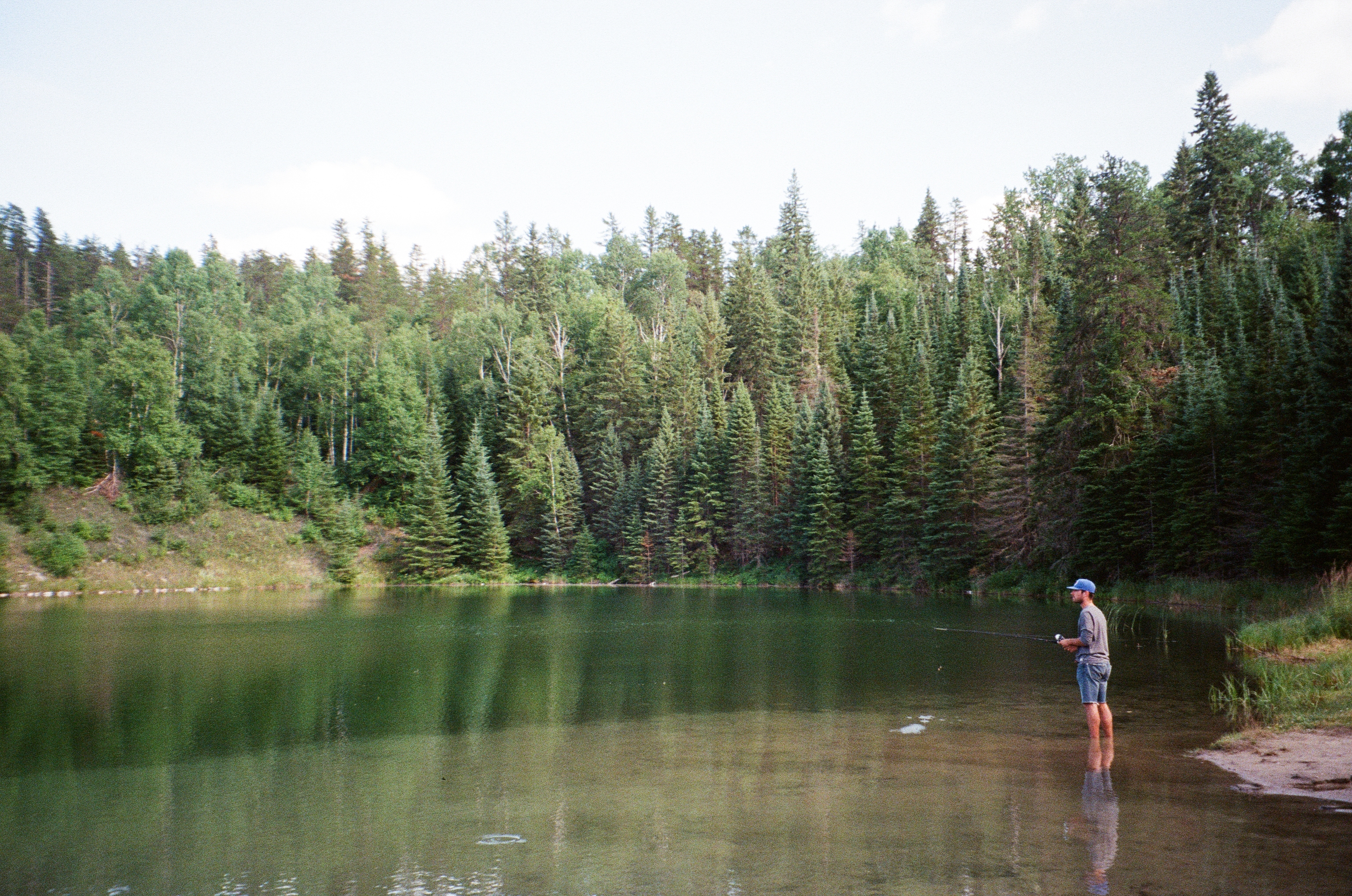
Cool Lake. No Fish. :(.
Before the time comes to do the whole ‘chasing athletics goals’ bit, I’m taking a good chunk of downtime to gain some weight, drink some beer, and let my body take a breather from the daily training grind we put ourselves through the majority of the year.
Cheers,
-Rob

Fasten Your Seatbelt
Howdy everybody, let’s rewind:
March – After my 24-hour indoor season in Seattle, our training group headed back to Victoria for a month and a half of training at our home base before we headed to Flagstaff, Arizona for some weeks at altitude. I felt really good about where my training was at for this month. I continued to gain momentum after the layoff I had in December/January with my bout of mono, and this was evident from my workouts and additional physiological testing we did in the lab at the Pacific Institute of Sport Excellence. Since things were going well and my base fitness was in a real good place, Heather and I decided that it wouldn’t hurt to try out a 5k at the end of March at the Stanford Invitational before we headed to altitude. The only catch was that I was restricted to wearing racing flats due to some chronically dull Achilles pain I’ve been experiencing (heel drops are still my best friend for this). I was hoping to possibly get under the 14 minute range if things went really well, but ended up with a 14:17 result (3k->4k in the race is a real bugger). Overall it was a good learning experience in an event thats still pretty foreign to me, and I’m excited to chop some more time off the next time I get into one.
April – Flag. Man this place is beautiful, but boy does it need some more oxygen. Basically the easiest way for me to describe the landscape is if the movie 3:10 to Yuma and Northern Ontario decided to have a baby, moved it to the top of a mountain and named it Flagstaff. The suburbs offer endless trails and dirt roads for easy mileage, and AC does an awesome job setting up accommodations and support from Northern Arizona University and Hypo2 to use facilities and get testing done (Big shout out to Hypo2, you can learn more about what they do here: https://hypo2sport.com). These benefits helped offset the exhausting fact that being up at 7000ft makes your lungs feel like we all smoke a pack a day. Our Victoria crew along with a large contingent of other Canadian athletes stayed up at the camp for just under 4 weeks (a long enough time where you can measure fitness gains made from living at a higher altitude, but short enough where you don’t go absolutely stir crazy). Training continued to roll up here which was a huge positive since this was the first time I’d been to altitude. We’d all been warned from multiple experienced athletes and staff about the horror stories of athletes who come to altitude only to crash and burn up from going too hard at the start of camp (in the wise words of Trent Stellingwerff, ‘make the last week count, not the first’). Coming off of altitude, our group headed to Corvallis, Oregon for the Oregon State High Performance Meet which I would use to take my first stab at a 1500. A 3:44 clocking felt groggier than I’d hoped, but was able to come back the next day and clock a more satisfying 1:51 in the 800. It was also great to see fellow Newmarket Husky Ben Richardson, who would go on to qualify for the Canada Summer Games this past month.
May – Time to cash in on the investment. When you go to altitude, the science says that the best time to race is either 48 hours after leaving the thin air, or 21 days after. In-between those times some people see a physiological lull. Because of this we decided that the beginning of May would be a good time to continue to get race sharp, and then really go for a good time in that second window. Our initial plan was to race at the first Portland Twilight meet, and then head to the USATF Distance Classic at Occidental College (Oxy for short) just outside of LA. The latter meet is set up really well by the USA track and field association to give American distance athletes a highly competitive, domestic race opportunity to hit world championships standards. A week before we were set to depart for Portland, I heard from former Villanova Assistant Coach Adrian Blincoe that I had a spot on the start line of another race, the Swarthmore Last Chance Meet, if I wanted it. This meet became famous in 2012 when Nick Willis (double olympic medallist for New Zealand) rabbited a slew of professionals and collegians to super fast times (sparking a debate whether the track was actually 400 meters). The race was being set up in a similar fashion this time around and it became apparent it was an opportunity that I couldn’t refuse, even though it was on the other side of the country (but conveniently a 25 minute drive from Villanova’s campus). The race lived up to the hype with Johnny Gregorek taking the win in 3:36 over Jordy Williamsz, my training partner for 4 years while we were at ‘Nova (later in the year they both qualified for the world championships that are currently happening in London England, atta be boys). Myself and a slew of other men came across the line in 3:39 which was both a personal best for me and the first time I broke the 3:40 barrier. Getting under that mark was immensely satisfying, especially to do it back at Villanova with a bunch of my friends and surprisingly my Dad, Mom and sister who flew in last minute to see it all happen. Huge shout outs to Dusty, Pat, Ali and Sarah for housing me on a whim and Chris Fitz for basically being my personal uber for the time I was in Philly. It was awesome to reconnect with many people I hadn’t seen for a full year. The Swarthmore Last Chance Meet was on a Monday, and the Oxy high performance meet was on that same Thursday. Ideal to take a 6 hour flight from Philly to La the day after to try to run another personal best? Negatory, but when the iron is hot, might was well strike it. Long story short, I ran out of gas in LA and ran 3:44. Disappointing? Yes. Understandable? Also a yes, which made that performance much easier to swallow than other poor outings.
June – The best thing that came out of May was that I’d achieved a goal I’d set for myself pretty early in the year, which left me hungry for more with still a lot of the season left to go. Running a personal best with more domestic opportunities available also opened doors that allowed me to get into faster races. Our next racing opportunities were in Victoria at our very own Vic City Elite Invite on a Thursday, and then at the Portland Track Festival the following Saturday. We decided that Victoria would be a good place to try another 800. Well, it wasn’t, and I ran a pretty poor 1:54 in windy conditions. Heather and I chalked it up to just a bad day, but I couldn’t help but let the negativity of the performance linger (something not to do there kids). We headed to Portland to refocus and take another shot at a fast 1500. I got into the top section, and although competed better than I had in the race that I’d set my PB in, was off the mark I was hoping for and ran a 3:41. Doubt crept into my mind at this point, did I deserve to be in the sections I was in? The past 4 races I competed in I finished in the back half of the field. Was my fitness vanishing out of thin air? Reflecting back on it now, I was definitely over thinking things. I let a single weekend dictate my confidence as opposed to thinking about the controllables such as months of solid training and good performances I should have been relying on. I was also facing a whole new level of depth of competition, which is easy to be negative about when I look at the results sheet and see my name further down the results list than I’d hoped. I made it my goal to get refocused and back on track (no pun intended) at the Harry Jerome Track Classic in Vancouver, my last race effort before the National Champs in Ottawa in July. I ran another 3:41, but instead of locking up in the last 200 like I had in Portland, I had much more fight at the end of the race and was happier with my overall execution.
July – One of my primary goals of the year was to medal at the National Championships. With a 4th place finish at the Olympic Trials last year, it was only logical to think that I had a chance to improve upon my placing although I knew it would be a tough task. In the 1500, tactics play a huge role in how your race plays out. This makes watching the race exciting, but increasingly stressful to actually be a part of. I knew that last year I was disappointed with my positioning when a crucial move was made in the pack, so this year I was more concentrated on being closer to the front of the pack to cover a surge in the pace. The gun goes off, and I’m spit out to the back of the pack (bad move on my part), but made a move to get up onto Olympian Chuck PT’s shoulder 500 meters in. I maintained my position and decided to make an initial move at 450 for the lead. Not long after my move I was passed by the chase pack, and was left fighting over the last 300 to try to regain contact. I ended up coming 5th overall, a real hard pill to swallow after having medal aspirations from the year prior. As hard as this was I’m happy with my execution and took away some valuable racing knowledge (you learn way more about the races that don’t go your way as opposed to the ones that do). Unfortunately, 5th not only left me off the medal stand, but also out of contention to be selected to represent Canada at the World University Games which takes place in August in Taipei. Right after nationals, a group of Canadian athletes hopped the pond to Leuven, Belgium to end out the season with a European racing circuit. First stop: Ninove in Belgium for a Flander’s Cup race. I clocked a 3:49 in a race that was won in 3:38 (ugggggly). Next week was Heusden Zolder, where I mustered a 3:48 on a windy day (just ugly, not uggggggly). What happened here? Still figuring out from a training perspective, but a large part was being emotionally drained and frustrated, with a dash of jet lag to add to the mix.
I didn’t envision myself running 9 seconds slower than my personal best in my last race of the season, but things don’t always go the way we drew them up to be. Am I discouraged? Of course, I went to Europe and ran times that I was surpassing in my freshman year at Villanova. But in the wise words of Rocky Balboa, the world ain’t always sunshine and rainbows. For more digestion of the season as a whole, check out another separate post (since this one is already aggressively long).
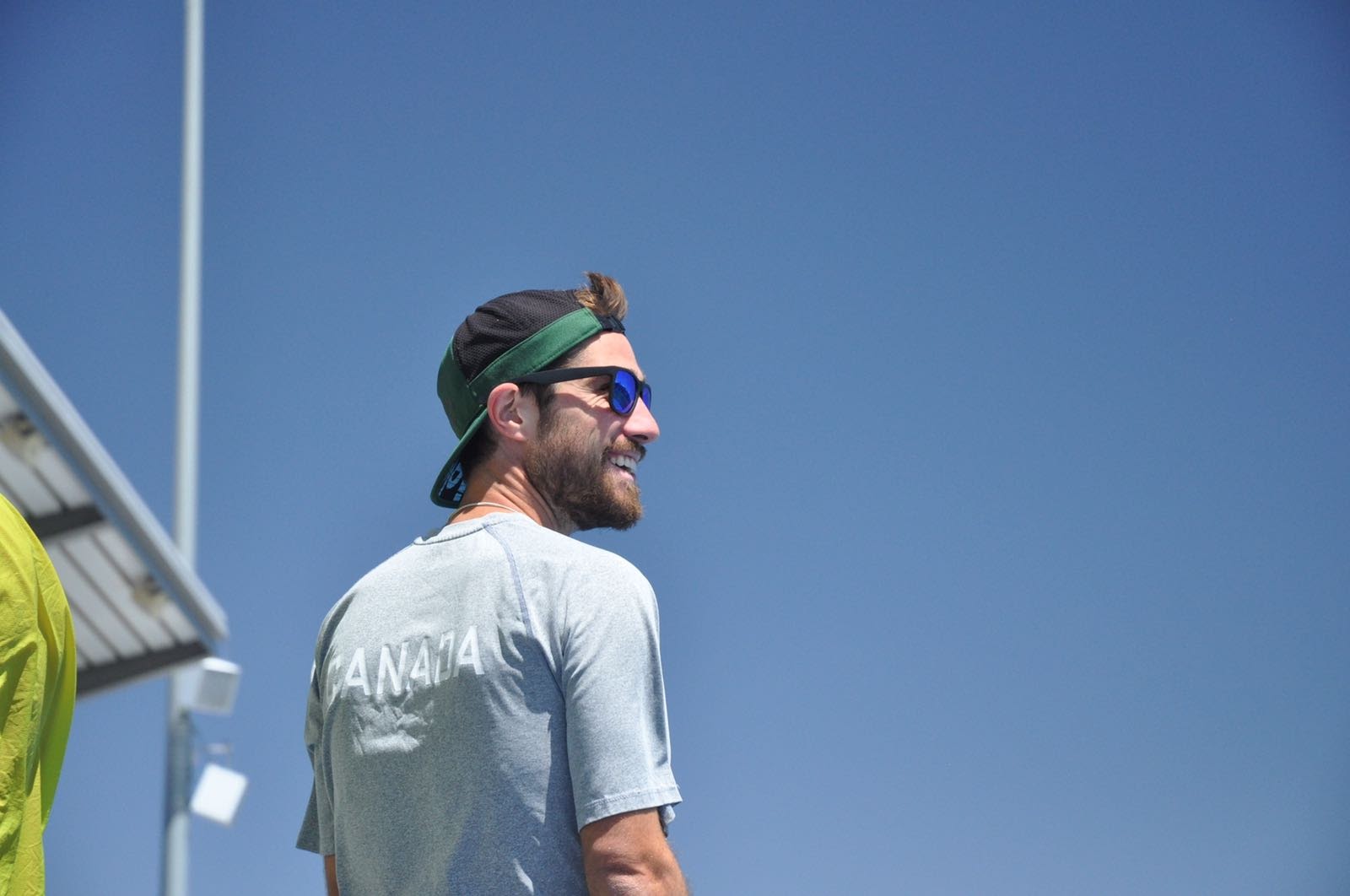
Toodles,
-Rob

Santiago
When 2017 rolled around I started the year off with a clean slate. After taking an extended break from running at Christmas, I returned to Victoria eager to get back on track with a clean bill of health after being sick with mono. Under the watchful eye of the West Hub Integrated Support Team, I was able to jump into a few light workouts and eventually cleared to head to Athletics Canada’s warm weather training camp in San Diego at the end of January. Big props to our IST for helping me transition back into full training safely and effectively. Before we headed to camp, myself, Ross and Jess Furlan were able to check off another item on the ole Victoria bucket list: Mystic beach. To get to these rocky shores we headed west through some popular surfer spots, made an extended pit stop at Shirley Delicious (an island must see attraction/cafe), and hiked along the Juan de Fuca trail. Not a bad way to spend a Sunday afternoon.
Two things always come to mind when I think of California: good weather; fast races. Ironically, it rained our first two days at camp, but from that point on it was pretty much sunshine and sunburns. We were based at one of the USOC’s Olympic Training Centres in Chula Vista, a place that has probably never seen a lick of snow. Our dorms were 200 meters away from a 12 lane outdoor track, which was another 200 meters away from a trail system that extended through the local suburbs and Otay Lake. The centre also included a cafeteria, weight room, athletic therapy clinic and game room. This created a perfect environment for the group to get in an extra heavy dosage of training. Along with the West Hub crew in Chula Vista were athletes from Toronto, Ottawa and Vancouver. Most of the group had known each other prior to the camp, which allowed for a positive training environment (and hyper competitive board games).
When the group wasn’t training we were able to explore some of the attractions in the greater San Diego Area. Mission Beach provided an ideal environment for instagrams, tacos, and Spikeball (if you’ve never played, see how it works here https://www.youtube.com/watch?v=7bubKNFVZvE). Imperial Beach had less tourists, more boardwalk, and great ice cream. The best surprise of the trip came when we ventured to Mission Bay for long run. During our activations, Trent Stellingwerff mentioned he’d heard that “Meb runs here sometimes”. As the sentence left Trent’s lips, the Olympic Medallist pulled into the empty parking space where we were standing and presented himself, about to embark on a solo long run (link on Meb here: https://en.wikipedia.org/wiki/Meb_Keflezighi). I was fanboying pretty hard and talked Meb’s ear off for most of the group run that he allowed us to join him for. Second to this moment was mammoth sized donuts we acquired at the Donut Bar, a deserving reward after that morning’s barn burner of a speed session.
Coming out of San Diego Heather and I planned to do two races in Seattle: a mile at the Husky Invitational and a 1k at the UW Open the following day. After our training camp I was confident that I’d been able to get myself into solid shape. I came into the weekend with an open mind and the race mentality to work on execution as opposed to a time goal. I went 4:04 in my mile and finished in the back half of my heat, which was a disappointing result, but taken with a heavy dose of perspective and realization that the summer season is still a long ways off. I came back the next day with a near PB in the 1k of 2:24.6 and left Seattle satisfied with both efforts and ready to dive back into training.
For the next little while we’ll be in Victoria putting in a month a half of solid training. When April rolls around, we’ll head back south to Flagstaff, Arizona for another training camp at altitude before the outdoor season gets underway.
Until then, you stay classy San Diego.
-Rob
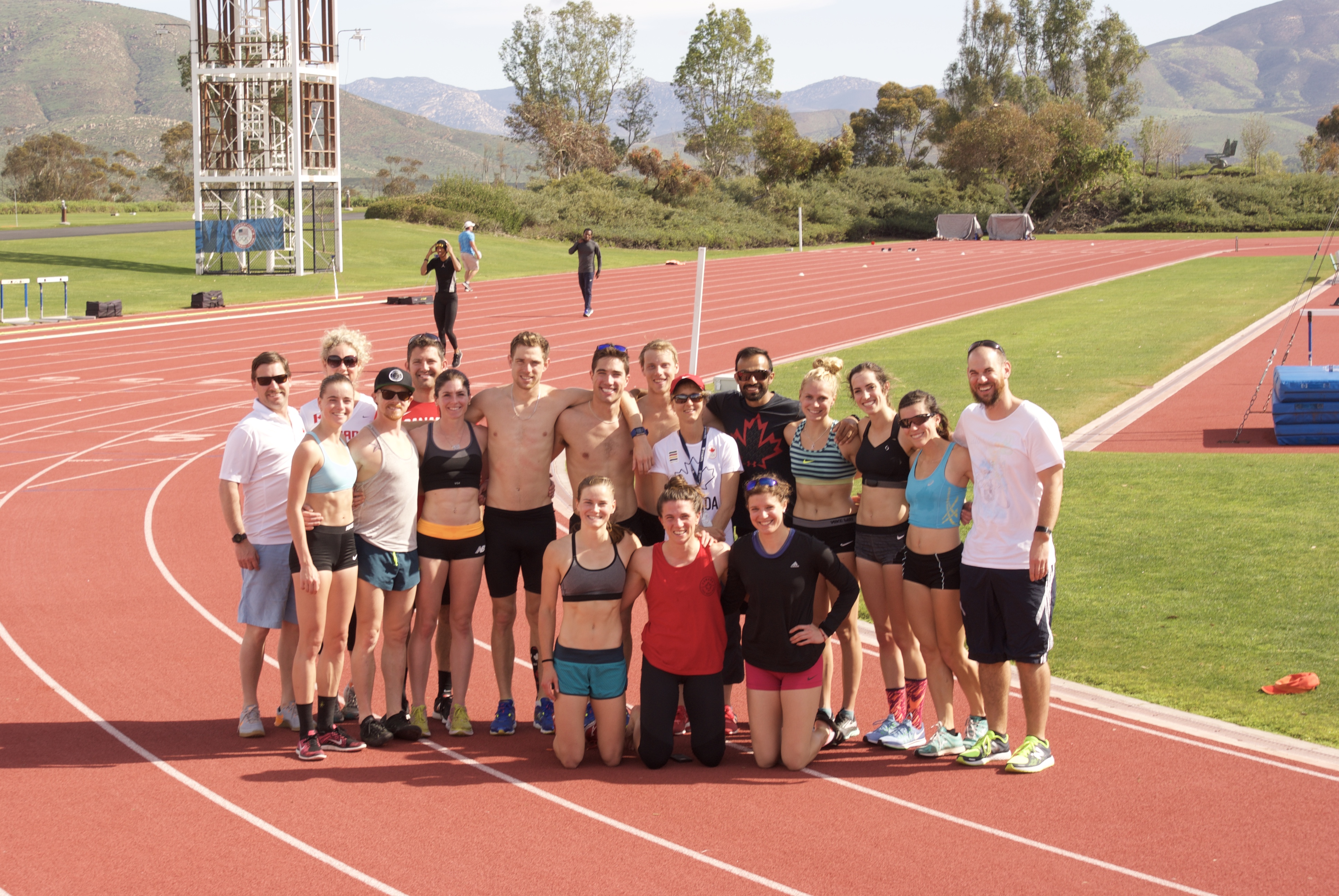
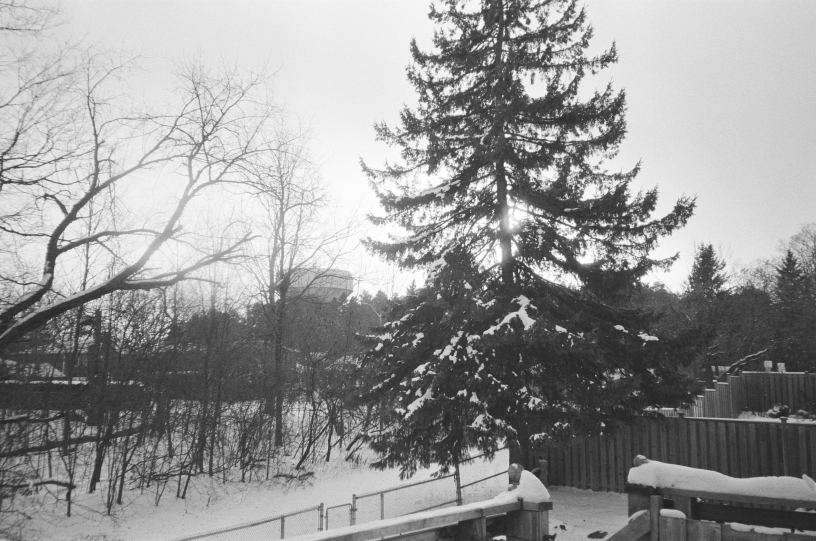
Xc and Xmas
With the changing colours of the leaves, more frequent use of half tights, and need to wash out the mud in almost everything I own, fall had hit the west coast. After Thanksgiving, our group began to ramp up our mileage and string together some solid weeks of training.
One of the more feared aspects of the fall season is the testing we do to benchmark our progress throughout the year. This consists of 30 meter sprints, multiple jump tests, body comp measurements, and the most fun of all, VO2 max testing. In short, you have to run progressively faster on a treadmill with a bane mask on until you reach a somewhat drunken state of exhaustion. The test is both mentally and physically tough since you’re in anticipation of the pain for a good 25 minute before things start to get spicy. All the testing that is conducted helps give us appropriate training zones as well as analyze weakness we can improve upon going forward.
After the block of testing, Ross and I competed at the BC cross country championships up island in Nanimo, BC. I was able to snag the bronze, some nanimo bars, and gain momentum for nationals in Kingston at the end of November. Along with the race, we’ve been able to explore a bit more of the island including hiking to Mackenzie Bight (no whales, but we’ll be back), checking out the salmon run and trestle at Goldstream Provincial Park (salmon are stinky, trestles are awesome), and hitting up pumpkin patches and coffee shops (I don’t even like coffee).
By the time we knew it, the end of November had come and it was back to Ontario for the Canadian XC Championships in Kingston. Two months in Victoria had flown by and it was time to reunite with the Huskies to tear up Fort Henry. It was awesome to take a coach bus from Newmarket filled with bright neon runners to compete against some of the best athletes in the country. Our senior mens team had our eyes on a team medal, which served as an extra piece of motivation throughout the 10km race. After 4 laps of Fort Henry, I ended up 14th and our team finish 2nd overall by a single point. From a personal standpoint, I was hoping for a better finish but was able to take positives (strong last lap) and negatives (losing contact with the lead pack early on) out of the race. From a team standpoint the sting of coming so close to winning the whole thing was tough, but we were able to overlook that aspect and realize we’d still accomplished something pretty cool. The guys on that team are people I’ve grown up running with since my first days in the club, which makes it extra special to get on the podium together.
After Kingston I planned to stay in Aurora for the month of December to put in a solid training block while spending a few weeks with the family. Unfortunately what’s planned on paper doesn’t always happen in reality. After nationals I developed flu-like symptoms and was bedridden for a week, tried to re-ramp my training only to fall back into a fatigued state. After a visit to the doc and a blood test it turns out I had fallen victim to a runner’s worst enemy, mono. After throwing a small tantrum and feeling sorry for myself, I came to the realization that neither were going to help my situation and I just had to chill out. The extra rest has given me more time to visit with family as well as become a photography apprentice under my brother and his girlfriend who were home from their teaching stint in Whitehorse (check out their adventures here: http://alexdenault.wixsite.com/brittanymacleod ).
Although my diagnosis made this year end on a bit of a down note running-wise, it won’t put a damper on the year as a whole. Besides all that really crappy stuff that happened this year (http://www.metronews.ca/views/opinion/2016/12/26/why-2016-sucked-.html), 2016 gave me the most important piece of paper I own, took me to new places, saw lifelong friends become olympians, allowed me to reach new heights athletically, all while pouring gasoline on my fire for the future. Thanks for reading, and cheers to 2017!
Until next year,
-Rob
P.S. There’s no debating that this was the best 4.7 seconds of 2016: https://www.youtube.com/watch?v=L7FFJUz0tdo

Toto, I’ve a feeling we’re not in Kansas anymore.
It’s hard to believe its been a full month since I packed up and moved out to Vic. I left the GTA at a very inopportune time from a sporting perspective. The Jays are making another run at the World Series and Auston Matthews has somehow given a glimmer of hope to the Leafs nation 40 minutes into the NHL season. As awesome as it would be to experience the sports buzz in the 6ix right now, my past few weeks haven’t been half bad.
My parents flew out to Victoria with me to help settle me in and explore the area for a few days. Neither of them had ever been to Vancouver Island before, so it was my duty to show them the few cool spots I knew about. We stayed in an AirBnB on Dallas road which overlooks the Pacific ocean and some of Washington State’s mountains. We were within walking distance of Beacon Hill Park (see world’s tallest totem pole below) and Cook Street Village (we highly recommend the Beagle Pub) which made for some nice backyard scenery and instagramable pictures.
It’s a difficult task to describe the feel/personality of Victoria. One minute you could be driving through a wealthy neighbourhood in Oak Bay that looks like something I used to run through on the mainline in Philly; the next you’re in a quiet residential area where every other home has a palm tree in the yard. Turn another corner and you’re at Mount Doug, the tallest viewpoint in Victoria that contains the rainforest vegetation you’d expect from the island. There’s a new park to explore at every other street corner, with hidden gems like Nikkel beach that you can just randomly stumble upon. The downtown core has a plethora of restaurants and coffee shops all within walking distance of the waterfront and parliament buildings. The locals joke that everything in Victoria is 20 minutes away, which is honestly one of the best parts about living here. Want to do a cool walk/hike? 15 minutes in basically any direction. Get downtown? 20 minutes on the bus from the Pacific Sport Institute (our main training base). Need to get to the university? That’ll be 25 minutes from the other side of town. Adventures can occur on a whim. If you want to get out of town Nanaimo is 90 minutes away, and little coastal towns like Sooke are within an hours drive.
After two weeks of getting settled, the West Hub kicked off the season with a weekend retreat to Whistler. The camp served as a time where we could get some meetings and introductory logistics sorted out, as well enjoy the Rockies and some wicked running trails. Driving up the Sea to Sky highway was straight up silliness; pictures don’t come close to showcasing the massiveness of the mountains. We were able to explore Whistler Village, Lost Lake, and snuck in some time for a running-biathlon on the actual Olympic course from 2010. The highlight of the trip was the hike in Joffre Provincial Park on the last morning before we headed back to Victoria. The park contains 3 glacier lakes and provides scenery that people from across the globe come to witness. For a town of only 10,000 people, Whistler sure has a lot to offer.
After coming down from our retreat in the mountains, we officially began training. Ross Proudfoot has come out to Victoria for an extended training camp, so its been awesome to have another beauty from Ontario to explore the area with/ destroy me in tempo runs. We’ve only scratched the surface with our running expeditions, but both of us have been impressed thus far with the extensive trail systems that intertwine throughout the community’s neighbourhoods and backwoods. This past weekend we both ventured off the island to spend Thanksgiving with my good buddy Michael Bourgeois and his Vancouver crew. Although we were only in Van for a day we got to see a decent portion of the city, highlighted by our long run to Stanley Park. Stanley can be described as basically a rainforest that is placed right in the middle of one of the biggest cities in Canada, with well groomed running trails winding through the century old conifers. Not a bad place to lay down an 80 minuter.
Training has started to ramp up here, and I’m starting to get settled into an actual schedule. Heather Hennigar, our primary coach here at the West Hub, and I have a tentative plan to jump into the BC Cross Country championships at the end of the month to give the wheels a spin. Until then, it will be back to work on the running and exploring end.
Until next time,
-Rob



































































































































































































































